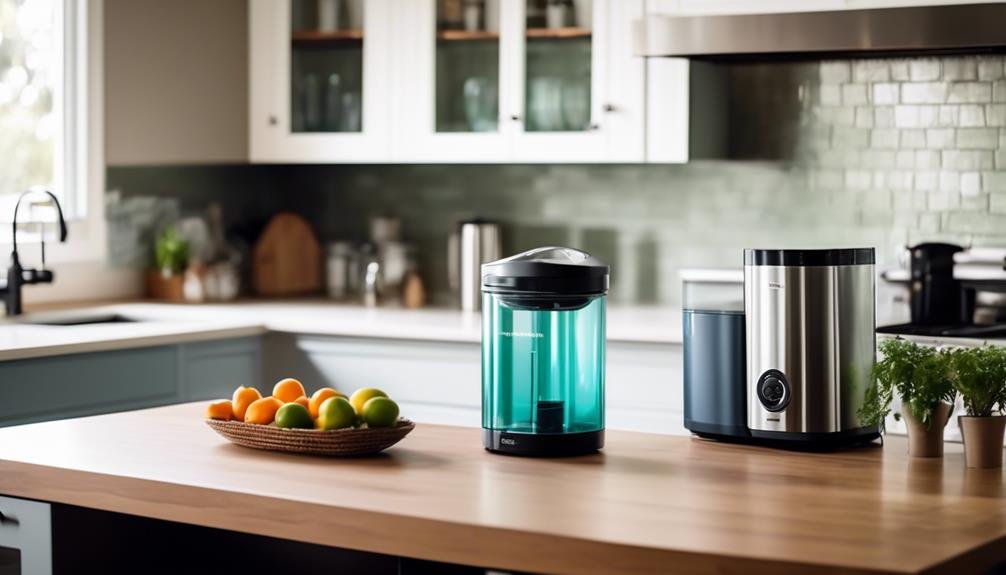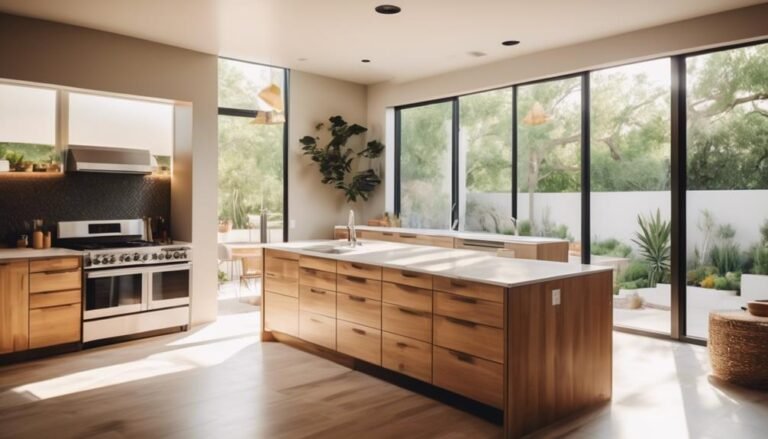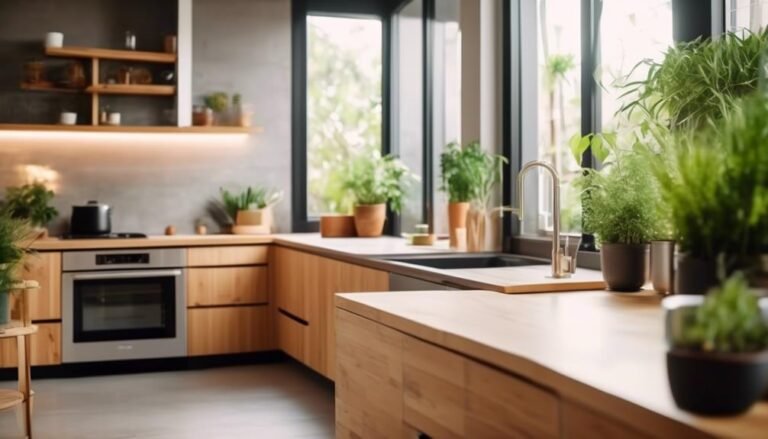What Defines an Eco-Friendly Kitchen Remodel in San Antonio?
Remodeling your kitchen is not just about making it look good and work well. It's also about making it better for the environment. So, what exactly makes a kitchen remodel eco-friendly in San Antonio?
It's all about finding a balance between modern design and sustainable practices. As you think about redoing your kitchen, from the materials you use to the appliances you choose, you'll find that there are specific decisions you can make to lessen your impact on the environment without giving up style or convenience.
But how do you find this balance? Keep reading to find out the key elements of an eco-friendly kitchen remodel that will help you create a space that's both stunning and good for the planet.
Key Takeaways
When you decide to remodel your kitchen, it's not just about making it look better and work well. It's also about making it better for the environment. So, what exactly makes a kitchen remodel eco-friendly in San Antonio?
It's about finding a balance between modern design and sustainable practices. As you think about redoing your kitchen, from the materials you use to the appliances you choose, you'll find that there are specific decisions you can make to lessen your impact on the environment without giving up style or convenience.
But how do you find this balance? Keep reading to find out the key elements of an eco-friendly kitchen remodel that will help you create a space that's both stunning and good for the planet.
Sustainable Materials for Kitchen Remodeling
Planning an eco-friendly kitchen remodel? Consider using sustainable materials to reduce environmental impact and create a more durable, energy-efficient kitchen. Opt for recycled and environmentally friendly materials to minimize the need for new resource extraction. Choose long-lasting options like reclaimed wood, bamboo, and cork to reduce the frequency of replacements.
When picking materials, think about their energy efficiency and environmental impact over their lifespan. In San Antonio, it's important to invest in responsibly produced and sourced sustainable materials. Look for eco-friendly options like recycled plastic, which not only reduces waste but also supports a circular economy.
Also, think about using energy-efficient appliances to further decrease your kitchen's energy consumption. Prioritizing sustainable materials helps you create a stylish and functional kitchen while reducing your environmental footprint.
Make informed choices by researching and selecting the most suitable sustainable materials for your eco-friendly kitchen remodel.
Energy-Efficient Appliances and Lighting
As you continue your eco-friendly kitchen remodel, consider choosing appliances and lighting that will help reduce your environmental impact and energy consumption. Energy-efficient appliances are essential for lowering energy bills and minimizing your carbon footprint. Investing in Energy Star-certified appliances and models with high energy efficiency ratings can lower your utility bills and make your kitchen more eco-friendly.
Upgrading to LED lighting can also decrease energy usage, making your kitchen remodel more sustainable.
It's important to think about the long-term benefits of using energy-efficient appliances and lighting. These choices not only reduce your energy consumption but also align with the principles of a Sustainable Kitchen Remodel. Consulting with a Green Professional can help you select the most energy-efficient appliances and lighting options that fit your specific needs.
Prioritizing energy efficiency in your kitchen remodel can make a meaningful impact in reducing your environmental footprint and lowering energy costs.
Water-Saving Fixtures and Plumbing
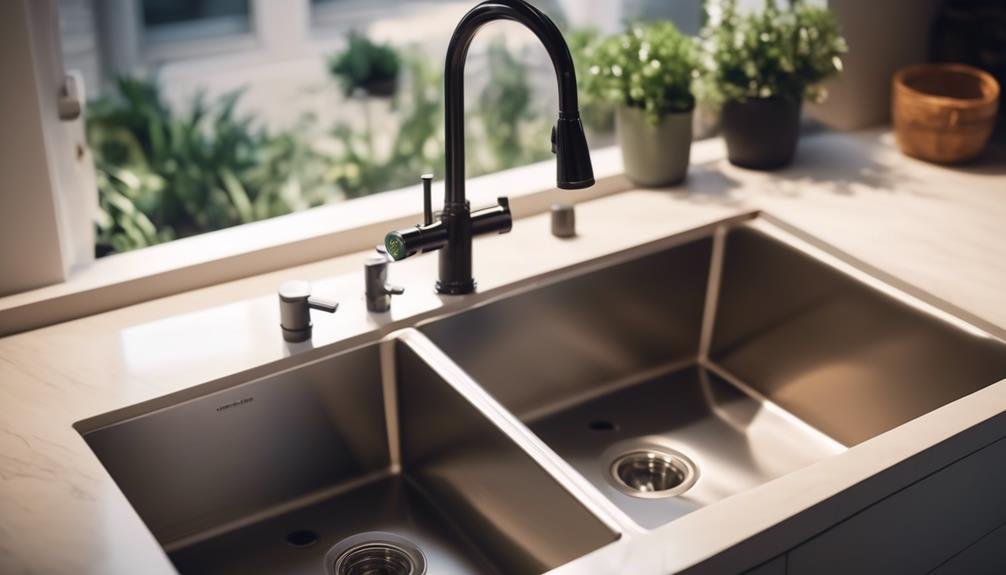
When you're planning a kitchen remodel, it's important to think about water conservation. By choosing water-saving fixtures and plumbing, you can reduce your water usage and help the environment.
In San Antonio, it's especially important to consider eco-friendly home improvements when remodeling your kitchen.
Look for low-flow faucets, showerheads, and efficient dishwashers to save water during your daily tasks. You can also use water-efficient technologies like aerators and dual-flush toilets to conserve water.
When it comes to plumbing materials, consider using PVC-free piping and fixtures made from recycled or sustainable materials to promote sustainability.
Another great way to save water is by installing a greywater recycling system, which repurposes water from sinks and showers for non-drinking purposes.
When working with a remodeling contractor, make sure to discuss these water-saving options to create an environmentally friendly kitchen.
Indoor Air Quality and Ventilation
When renovating your kitchen, it's important to think about the air quality inside your home. Good ventilation can help keep the air clean and fresh, making your living space healthier and more comfortable. One way to achieve this is by installing exhaust fans to get rid of cooking odors and steam. A range hood with a vent to the outdoors can also help by removing airborne particles from cooking.
Opening windows and doors can let in fresh air and reduce the need for mechanical ventilation systems.
Using eco-friendly materials like recycled wood and natural stone can also help improve indoor air quality. These materials release fewer harmful chemicals into the air, which can reduce indoor pollution. You can also consider using air purifiers to remove allergens, dust, and other pollutants from the air.
Waste Management and Recycling Systems
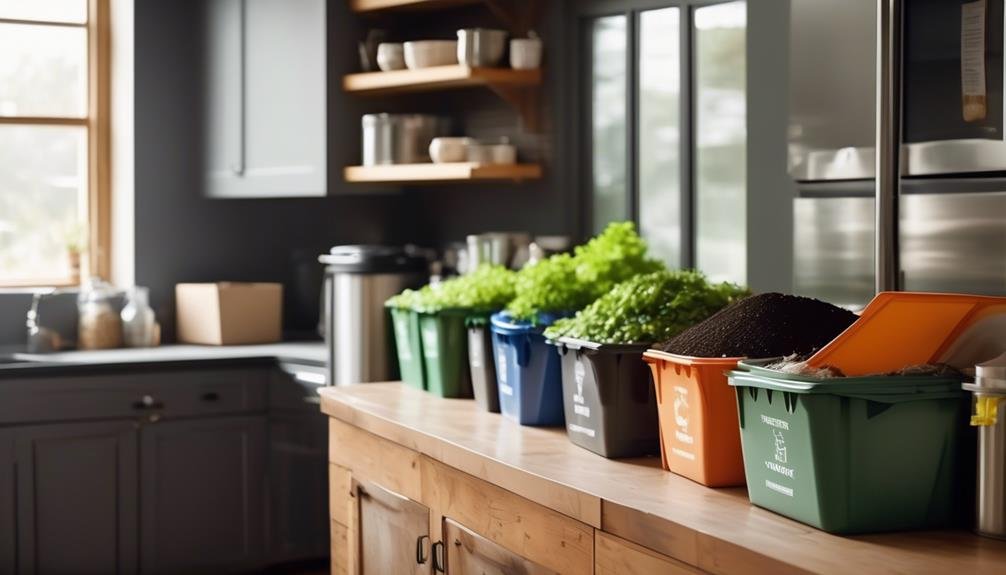
When you're planning a green kitchen remodel, it's important to think about how to manage waste and recycling effectively. Properly disposing of construction waste during the remodel is a good start.
You can also incorporate recycling bins and composting systems into your kitchen design to manage waste sustainably. This way, materials like reclaimed wood and recycled glass can be sorted and reused, reducing the amount of waste sent to landfills.
Using recycled materials for cabinetry, countertops, and flooring not only reduces waste but also helps the environment. You can also work with local recycling programs and organizations to responsibly dispose of old appliances and fixtures.
Frequently Asked Questions
What Is Eco-Friendly Kitchen?
Creating an eco-friendly kitchen is all about sustainability. It means using materials that are good for the environment, like recycled and durable ones. Energy-efficient appliances are also a big part of it. This helps to reduce energy use and lower the impact on the environment. An eco-friendly kitchen is not only good for the planet, but it can also save you money in the long run.
How Do You Remodel a Kitchen Sustainably?
Remodeling your kitchen sustainably means using materials that are recycled and long-lasting, investing in energy-efficient appliances, and making sure your kitchen is designed for maximum efficiency and accessibility. It's also important to hire a contractor who is committed to eco-friendly practices and has a track record of green projects. By taking these steps, you can create a kitchen that is not only beautiful and functional, but also better for the environment.
What Does a Sustainable Kitchen Look Like?
Creating a sustainable kitchen means designing a space that prioritizes eco-friendly materials and energy-efficient appliances. This helps to minimize our environmental impact and make our homes more efficient. By choosing durable, low-impact options, we can make our kitchens greener and more sustainable for the long term.
What Is Sustainable Practice in Kitchen?
Creating a sustainable kitchen involves using recycled materials, energy-efficient appliances, and long-lasting, environmentally friendly materials. It's important to choose a contractor with relevant certifications for an eco-friendly kitchen remodel. This helps homeowners reduce their environmental impact and save on energy costs in the long run.

